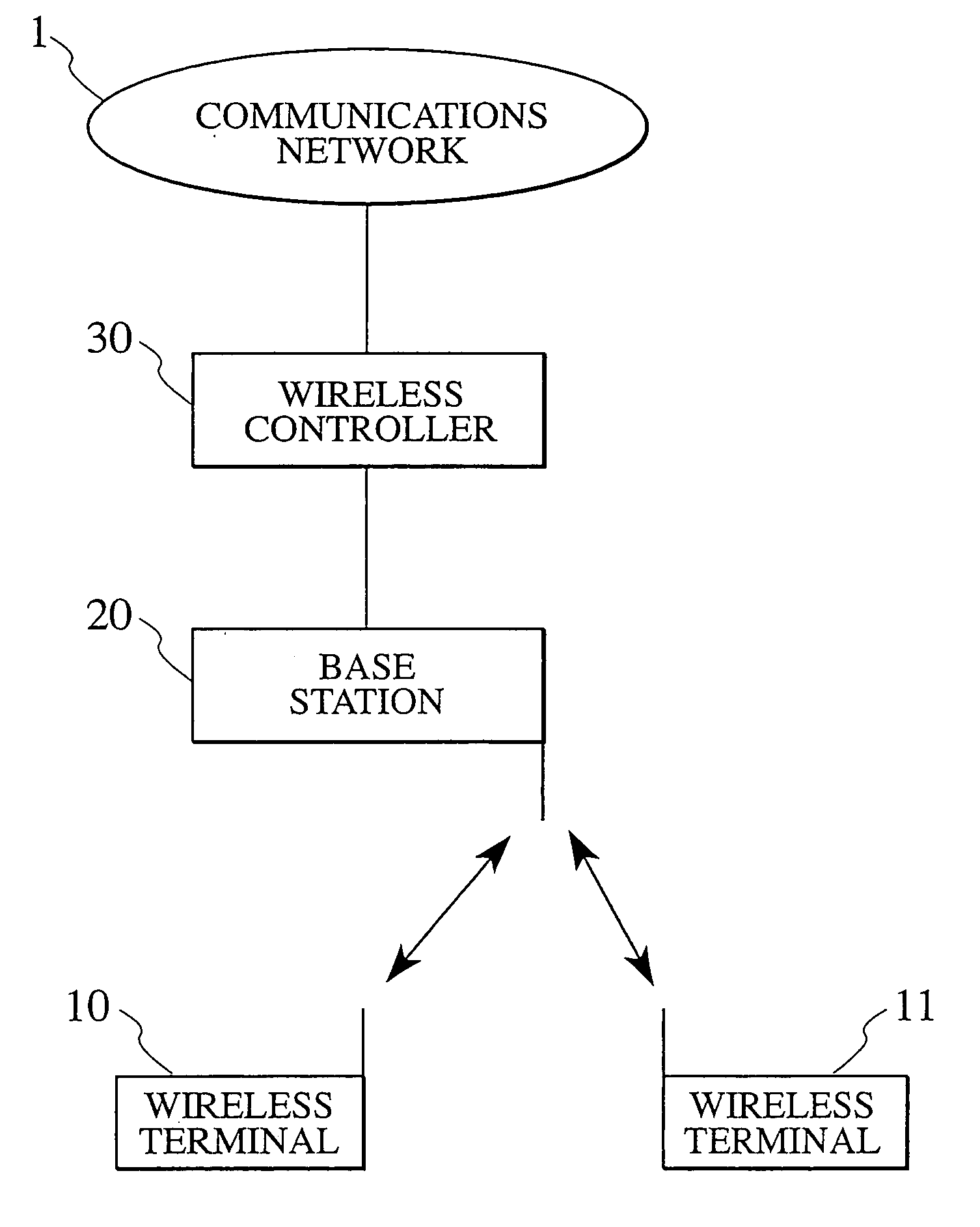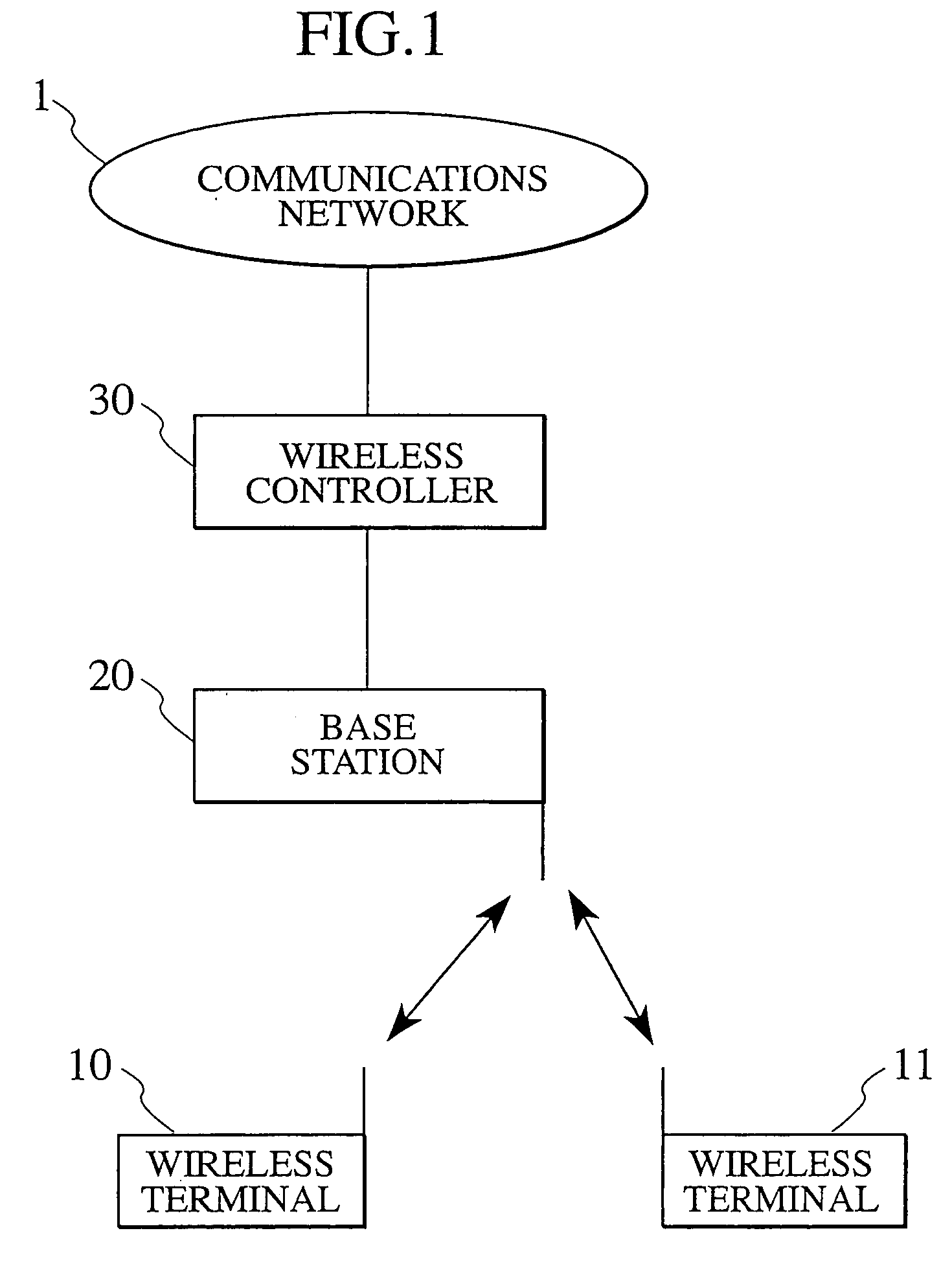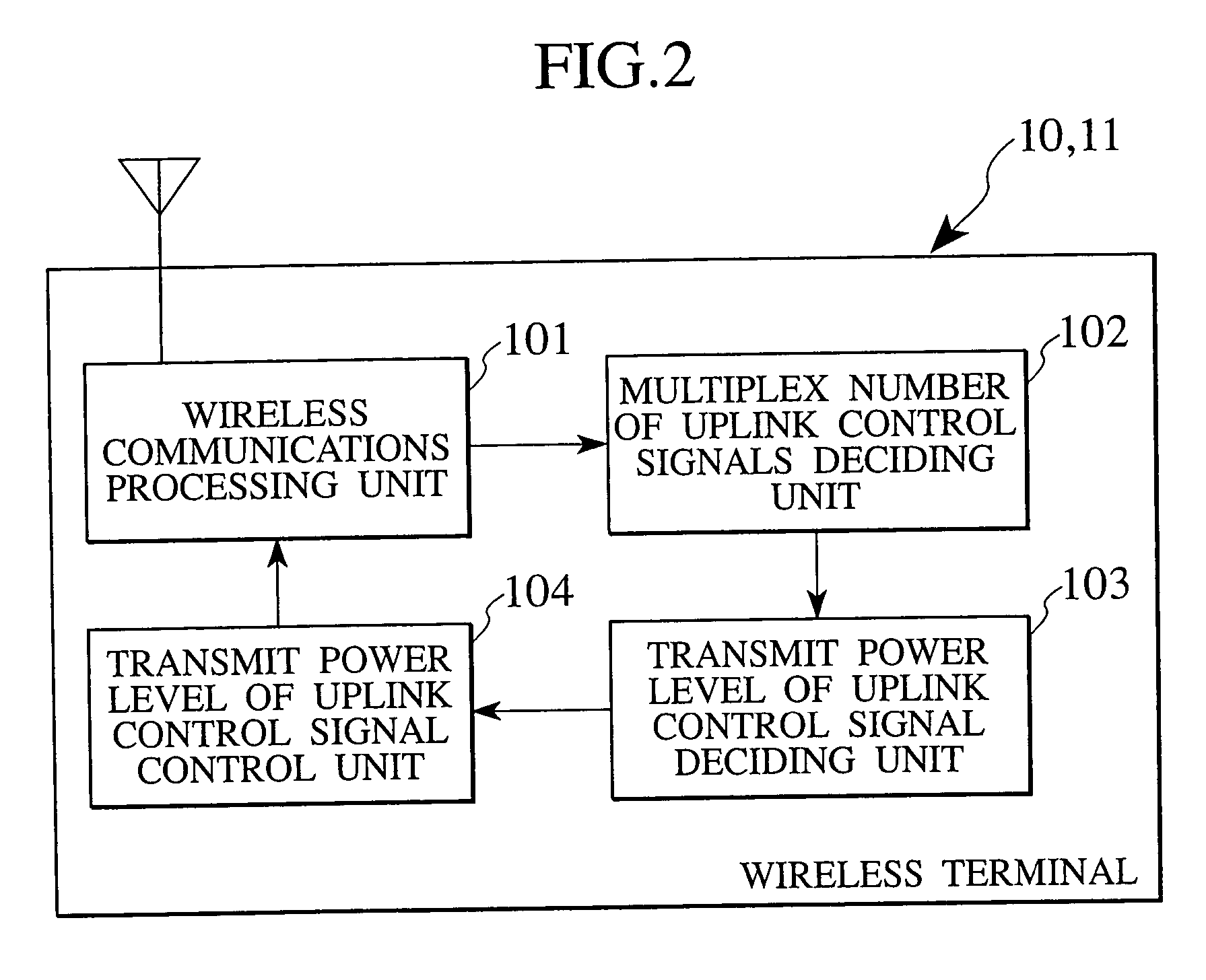Method of deciding transmit power level, wireless terminal, base station, and mobile communications system
a wireless terminal and power level technology, applied in the field of deciding transmit power level, wireless terminal, base station, mobile communications system, can solve the problems of wireless terminal itself not recovering the loss of the necessary downlink data signal, thermal noise, fading interference errors with other users,
- Summary
- Abstract
- Description
- Claims
- Application Information
AI Technical Summary
Benefits of technology
Problems solved by technology
Method used
Image
Examples
first embodiment
[0077] [First Embodiment]
[0078] FIG. 1 illustrates a mobile communications system in accordance with the first embodiment of the present invention. The mobile communication system includes wireless terminals 10 and 11 such as a cellular telephone, a PDA or the like which can wirelessly data-communicate. The mobile communications system also includes a base station 20 and a wireless controller 30. In this embodiment, the mobile communication system is connected with a communications network 1 via the wireless controller 30.
[0079] As shown in FIG. 2, respective wireless terminals 10 and 11 has a wireless communications processing unit 101, a multiplex number of uplink control signals deciding unit 102, a transmit power level of uplink control signals deciding unit 103 and a transmit power level of uplink control signals control unit 104. The wireless communications processing unit 101 wirelessly communicates with the base station 30. The multiplex number of uplink control signals deci...
second embodiment
[0102] [Second Embodiment]
[0103] A mobile communications system in accordance with the second embodiment of the present invention will be described hereinafter. The schematic diagram of the second embodiment is the same as that of the first embodiment shown in FIG. 1. The feature of the second embodiment is that wireless terminals 10 and 11 estimate the quality of uplink control signals 130 and 131 according to the content of downlink data signals from a base station 20 and determine the transmit power level of the uplink control signals, and that the base station 20 detects the quality of the uplink control signals from the wireless terminals and indicates to the wireless terminals 10 and 11 an adjustment of transmit power level of the uplink control signals according to the detected quality of signal.
[0104] As shown in FIG. 5, respective wireless terminals 10 and 11 includes a wireless communications processing unit 101, a quality of uplink control signal estimation unit 105, a tr...
PUM
 Login to View More
Login to View More Abstract
Description
Claims
Application Information
 Login to View More
Login to View More - R&D
- Intellectual Property
- Life Sciences
- Materials
- Tech Scout
- Unparalleled Data Quality
- Higher Quality Content
- 60% Fewer Hallucinations
Browse by: Latest US Patents, China's latest patents, Technical Efficacy Thesaurus, Application Domain, Technology Topic, Popular Technical Reports.
© 2025 PatSnap. All rights reserved.Legal|Privacy policy|Modern Slavery Act Transparency Statement|Sitemap|About US| Contact US: help@patsnap.com



